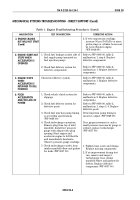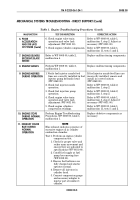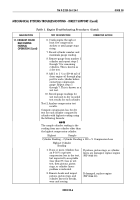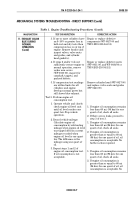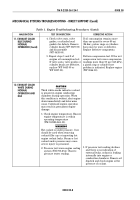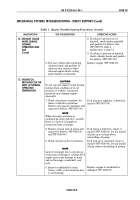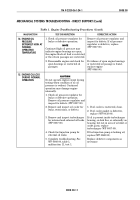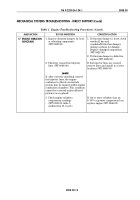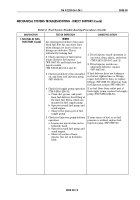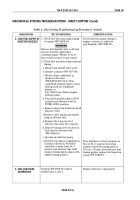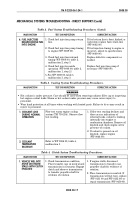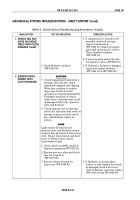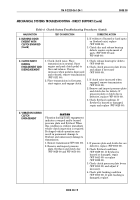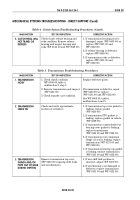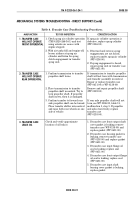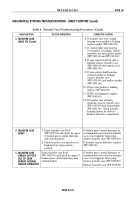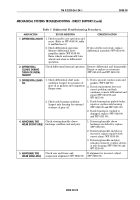TM-9-2320-361-24-1 - Page 142 of 1176
TM 9-2320-361-24-1
0008 00
0008 00-14
MECHANICAL SYSTEMS TROUBLESHOOTING - DIRECT SUPPORT (Contd)
MALFUNCTION
TEST OR INSPECTION
CORRECTIVE ACTION
WARNING
• Fuel is flammable. Do not perform troubleshooting checks near open flame, sparks, or electricity.
Injury or death to personnel may result.
• Eye protection is required when performing fuel system troubleshooting procedures. Failure to wear
eye protection may result in injury to personnel.
• Ignition switch must remain off during fuel system troubleshooting procedures. Failure to verify
that ignition system is turned off may result in injury to personnel.
1. NO FUEL AT FUEL
INJECTORS
WARNING
If rod clevis is not positioned tightly
against cover window bearing screw,
fuel shutoff rod may be binding.
Verify fuel shutoff rod travels freely
before adjusting clearance between
rod clevis and bearing screw. Failure
to verify fuel shutoff rod condition
may result in governor sticking,
under acceleration, and injury to
personnel.
CAUTION
Shutoff rod cover installation will
require fuel shutoff rod clevis
operating cable to be placed in the
RUN position and governor linkage
in the LOW IDLE position. Incorrect
positioning of linkage and/or fuel
shutoff cable may result in jamming
of linkage in FULL FUEL load
position. Engine will run wide open
when started and may cause damage
to engine.
1. Check fuel injection pump fuel
shutoff operation and adjustment
(WP 0071 00 and WP 0446 00).
Place fuel shutoff cable control on
instrument panel to RUN
position. Remove timing cover on
fuel injection pump
(WP 0069 00).
1. If clearance between rod clevis and
screw exist, check fuel shutoff rod
condition (WP 0446 00).
2. If clearance between rod clevis and
screw exists, adjust operating
cable (WP 0071 00).
3. If fuel shutoff is damaged or
defective, replace fuel shutoff
assembly (WP 0446 00).
Table 2. Fuel System Troubleshooting Procedures.
Back to Top

